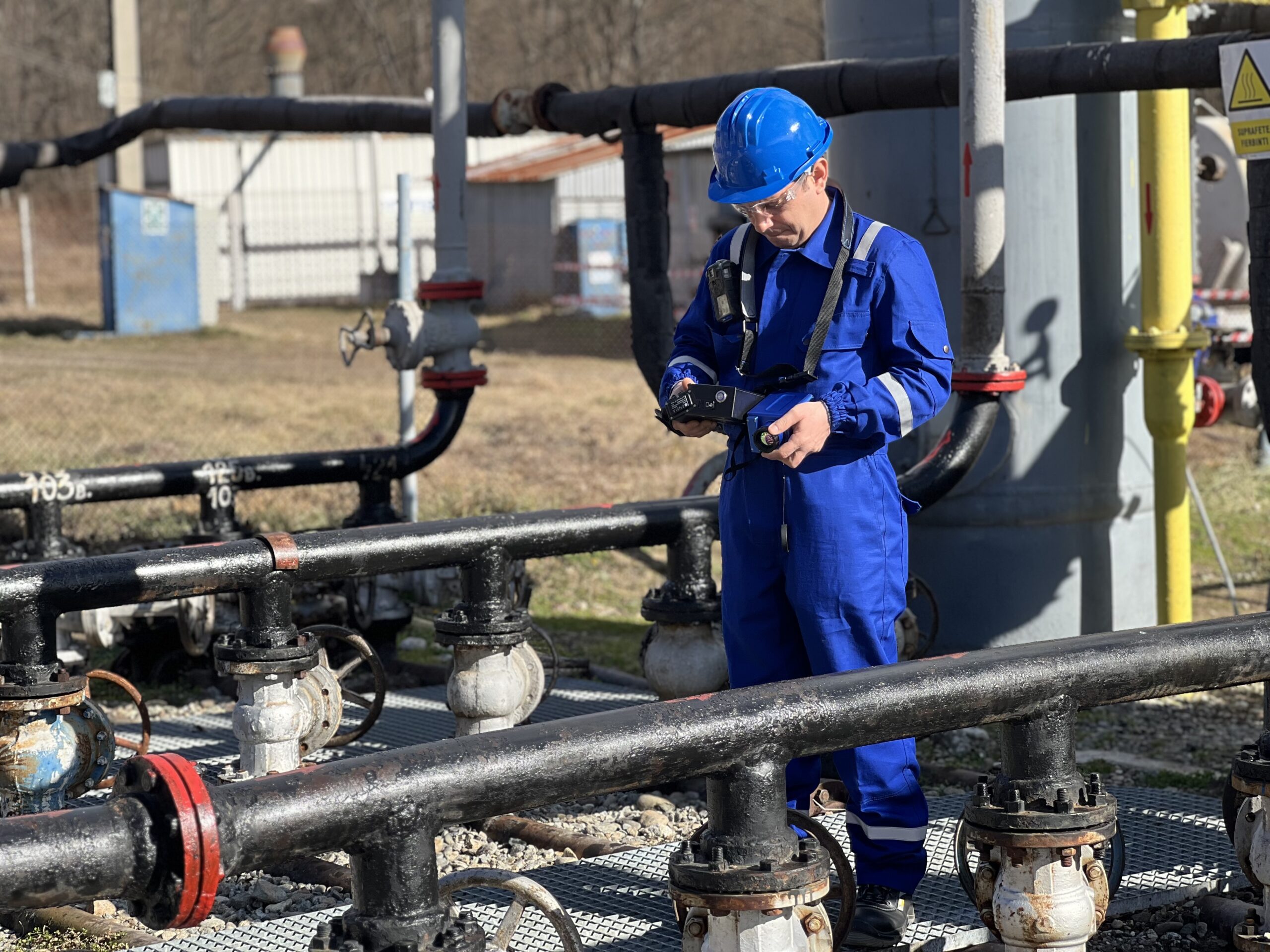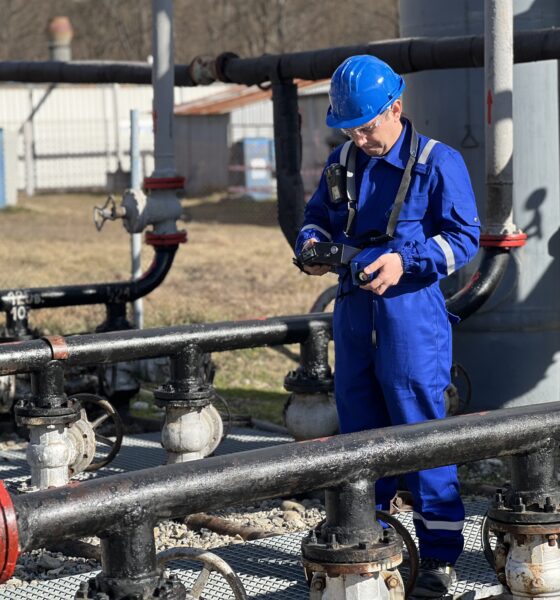

Environment
The Sustainable use of Natural Resources: XP Upgreen by Expert Petroleum
A View from Bart Wauterickx
While the exploitation of natural resources raises ever more compelling environmental issues, the world cannot seem to do without hydrocarbons in the foreseeable future. Expert Petroleum (XP), a specialist in the exploitation of mature oil and gas wells, has decided to implement a sustainable approach. We met Bart Wautericks, Managing Director of XP Upgreen, a branch of XP dedicated to reducing the environmental footprint of oil and gas production.

The carbon footprint generated by the exploitation of hydrocarbons is far from insignificant. How is the Oil & Gas industry responding to this challenge?
There are a lot of industries that have had a negative impact on the planet. The oil and gas industry is among them, according to the International Energy Agency, it is responsible for about 15% of all energy-related emissions.
Furthermore, over the course of one year alone, from 2024, an estimated 10,000 tons of oil were lost to the environment from tanker incidents that cumulate into long-term ecosystem damage. Cleanup is often plodding and laborious; in fact, as of February 25, the National Oceanic and Atmospheric Administration reported that the U.S. Coast Guard had recovered over one million gallons of spilled oil—a benchmark which also suggests the magnitude of the issue.
The Oil & Gas industry is a global sector characterized by a wide range of approaches, depending on the companies and countries concerned. These differences are generally influenced by the following factors:
- Regulatory frameworks.
- Public opinion. In some countries, environmental concerns are paramount, while in others, the focus is primarily on the industry’s economic impact. This has been especially true after the North Sea leaks.
- Ownership structure: the pressures faced by stakeholders and shareholders vary greatly between private entities and national oil companies (NOCs).
Generally speaking, many initiatives are driven by the companies themselves. Majors such as Equinor, TotalEnergies, BP, and Shell have placed environmental issues high on their agendas, navigating a debate between shareholders focused on maximizing profit and those advocating for greater environmental responsibility.
Despite criticism from environmental activists, these large companies are genuinely proactive. A key example is the Oil and Gas Climate Initiative (OGCI), which brings together 12 of the largest companies in the sector—representing over 40% of global oil and gas production. The OGCI members share information, publish performance data, and encourage other industry players to follow their lead.
There is real leadership in this area, and the results are notable. Since 2017, OGCI companies have collectively reduced upstream methane emissions by 55% and cut routine flaring by 53%.
Another important initiative worth mentioning is the Oil and Gas Methane Partnership 2.0 (OGMP 2.0). This is the flagship plan of action of the United Nations Environment Programme (UNEP), aimed at improving the reporting and mitigation of methane emissions in the oil & gas sector. This global initiative brings together approximately 140 to 150 companies, all committed to reducing methane emissions and reporting their progress on an annual basis. Methane is a central concern for the industry, as it has a significantly greater impact on global warming than carbon dioxide. Effectively measuring and reducing methane emissions is the only feasible pathway for a short-term effect on reducing the speed of increased global warming.
There are many other initiatives as well, such as the World Bank’s initiative to eliminate routine flaring by 2030. It would be impossible to list all the programs launched in recent years. However, the key to turning words into action lies in aligning with major initiatives that are backed by concrete action plans, clear commitments, and a strong emphasis on transparency and accountability.
In addition, an important factor to consider is the evolution of regulations.
Europe has implemented the most stringent legislation in the world, applying not only to domestically produced oil and gas but also to foreign companies exporting to the region. Companies are required to submit regular methane emission reports and meet ongoing demands for environmental improvements. In many ways, European legislation is setting the global standard. In contrast, the United States appears to be moving away from European-style regulations under the new administration. While this direction is still uncertain, it’s clear that between the pressure of European rules and the momentum of various industry initiatives, many companies are making meaningful progress.
XP is one them, it has launch a year ago XP Upgreen which aimed at optimizing mature oilfields to reduce waste, emissions, and environmental risks, so energy production is not only more efficient but also less harmful. With increased global attention to sustainability, such steps are integral to aligning industrial practices with ecological goals.
Is it realistic to expect the same environmental criteria to apply to rich countries as to countries with a much lower GDP?
I believe there should be no distinction based on a country’s level of economic development—especially from a technological standpoint. At Expert Petroleum (XP), for example, we make no differentiation between Romania and Ukraine. We apply the same technologies and processes in both countries, even though Ukraine, unlike Romania, is not a member of the European Union and does not have equally stringent methane emissions regulations.
Despite this, XP has chosen to implement the same high standards in Ukraine as in Romania. This reflects our own commitment to environmental responsibility. It’s a deliberate choice, and our partners recognize and value this dedication.
Unfortunately, the perspective is often different for many National Oil Companies (NOCs), whose primary focus is the rapid development of infrastructure to fulfil the growing domestic energy demand, and the revenues generated from hydrocarbon exploitation. In countries with rapidly growing populations and rising energy demands, the environmental dimension is frequently overlooked by NOCs. Public scrutiny also tends to be less intense than in regions like Europe or the United States. Take Nigeria, for example, where oil production has led to severe air pollution and soil contamination. In the long run, operating within a strict environmental framework is not just preferable; it is essential for sustainable development.
What is XP Upgreen and how does it differ from the ESG policies implemented by companies in the industry?
ESG is a broad term that encompasses many dimensions. At XP Upgreen, the branch of XP that I manage, our focus is firmly on the environmental aspect. XP Upgreen supports Oil & Gas companies in decarbonizing their operations. When we talk about decarbonization, we address sources of emissions harmful for Global Warming and Air Pollution like carbon dioxide CO2, and more importantly, methane CH4.
We help companies assess their environmental strengths and weaknesses and support in the challenges they face—whether driven by regulatory pressure or their own ambition to improve. In many large organisations, ESG efforts are often centralized, with a small team at headquarters responsible for collecting and reporting data. While this approach is effective for producing reports, it does little to actually improve the results.
Real progress requires being on the ground—measuring direct and indirect emissions, throughout the whole value chain from upstream to downstream activities—to identify the greatest opportunities and implement effective reduction strategies. At XP Upgreen, we don’t consider ourselves as consultants who simply recommend actions. We’re implementation partners—ready to deliver solutions when called upon.
Expert Petroleum has been committed to the sustainable development of upstream operations since its foundation by David Martinon and Michel Louboutin. As for myself, I had already accumulated 10 years of experience in this field when I joined the company. The combination of our expertise has created a unique synergy that now allows us today to deliver real added value through the solutions we offer.
XP Upgreen was launched two years ago and is already active in several countries. Our ambition is strong—because we not only understand the industry, but also know how to implement sustainable, practical solutions on the ground.
In practical terms, how are methane emissions detected and fixed?
We are actively addressing both intended emissions like flaring, combustion emissions and venting, and unintended emissions coming from leaking components. In practical terms, this means going into the field with mobile measuring equipment to quantify every emission and detect every potential leak—every gasket, every seal. We conduct extensive measurements; for upstream facilities alone, this can involve thousands of data points.
Once all the field data has been collected, we carry out detailed calculations in line with various technical guidelines and ISO procedures. To ensure credibility and maximize efficiency, XP has invested in big data capabilities and has developed its own dedicated platform. Depending on the country and specific context, data collection process is typically carried out two to three times per year. Given the scale and complexity of the task, a certain level of automation is essential to accurately analyse the data and identify the biggest improvement opportunities.
When a leak is detected, in 70 to 80 % of cases, simply tightening the bolts is enough to fix the issue. However, some leaks are more complex and may require replacing the valve seal or even the complete valve. When dealing with flares or high emitting equipment, the solution often requires significant engineering expertise—to redesign a system or develop viable commercial alternatives.
To get a bit technical, one of the major challenge the industry faces is the management of associated produced gas—the natural gas that is released during oil production. This gas is often flared, especially in locations where infrastructure is lacking. Our goal in these cases is to develop both technical and commercial solutions that allow the gas to be captured, utilized, and monetised, rather than simply burning or, even worse, releasing it into the atmosphere.
Is it possible to exploit natural resources without damaging the environment according to you?
It is absolutely possible—and should be the goal for every oil and gas company—to operate in a sustainable manner. There are already inspiring examples, such as the mining industry in Scandinavian countries, where companies are granted 50-year licenses and are required to fully restore the area once operations are complete. The oil and gas sector must follow this path and put an end to the pollution still visible in some parts of the world.
I firmly believe that natural resources can be exploited sustainably. By considering the long-term environmental impact from day one and ensuring that no harm is done throughout the lifecycle of a project, it is entirely feasible to leave sites in excellent condition— safe for both wildlife and human communities.
Creating a genuine market for the responsible and rational use of resources will drive greater responsibility in the oil and gas sector, with clear economic benefits as well. XP’s long-standing and successful experience, particularly in countries like Romania—where oil production has a long history—reinforces our confidence in this sustainable approach. We must remain committed and ensure the entire industry shifts toward a more responsible and sustainable future.


 Environment9 months ago
Environment9 months agoAre Polymer Banknotes: an Eco-Friendly Trend or a Groundswell?

 Environment10 months ago
Environment10 months agoEco-Friendly Home Improvements: Top 7 Upgrades for 2025

 Energy12 months ago
Energy12 months agoA Closer Look at The Rapid Growth of Solar Energy in Ireland

 Energy12 months ago
Energy12 months agoEV Charging Business: It’s About More Than Just Electricity





























